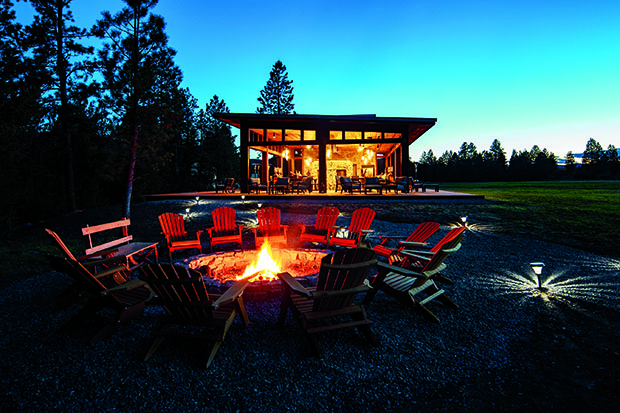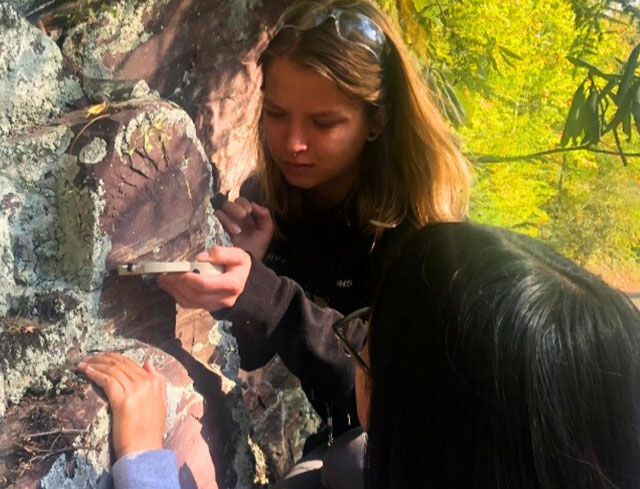Our Beloved Bears
06 Jun 2022
Coexisting with these wild creatures is both a blessing and a responsibility
By Brittany Conley

Bears have captured our hearts and imaginations for centuries. Stories and legends of black bears have been passed down from generation to generation. Often, our first and favored childhood toy was a teddy bear, and we learned important lessons about our responsibility to the natural world from the famous Smokey. Yet, this fascination is tempered by a bit of fear for the wild animal. And that dichotomy can lead to some interesting interactions between humans and bears, especially when we choose to live where they live.
Just because we moved in, does not mean the bears have ever had any intention of moving out. In fact, it is quite the opposite, as Charlotte Muir, executive director of the Highlands Biological Foundation, points out.
“People come here wanting to see bears as if they are moose out west or sharks in the oceans. In Highlands, the chances are good you are going to see them because they are so prevalent now in town. You don’t even have to go hiking to see bears; you’re more likely to see them in someone’s driveway,” says Muir.
According to the National Parks Service, black bears in the area are most active in spring and summer during early morning and late evening hours. Mating usually takes place in July.
While sightings at homes are still somewhat rare, the black bears’ relative prevalence is why adopting “BearWise” practices was so important for the health and safety of all creatures who live and visit here. Naturally, as people begin inhabiting once-wild places, wildlife populations often take a hit, and the black bear population is no exception. The data, however, points toward a promising shift. “Thanks to new attitudes and enlightened conservation and management efforts, black bears are making a dramatic comeback over much of their historic home range,” according to BearWise, black bear program that provides information, education and smart solutions that help homeowners, businesses and communities coexist with bears.
The principles of being BearWise are devised by a team of brilliant bear biologists and are designed to promote a responsible way of living with each other that protects animals and residents—and encourages bears to stay wild. The path to becoming BearWise-certified is not easy, but it is key to fostering a thriving environment. Highlands was the nation’s first BearWise-certified community.
“In 2021, town ordinances were put in place that, ultimately, protect bears as well as residents and visitors. Highlands is surrounded by beautiful, lush mountain forests, much of which is protected land that is enjoyed by humans and wildlife alike. So, living responsibly and co-existing with not only black bears, but all the abundant wildlife found here is essential. Becoming BearWise certified aligns with our community’s values around protecting the natural environment and habitat,” says Kaye McHan, executive director of Highlands Chamber of Commerce. “Highlands’ history and dedication to becoming the first BearWise-certified community goes back several years, when town leaders committed to achieving the status.”
Town ordinances include prohibiting the intentional feeding of bears and leaving food, garbage or any other substance that attracts bears.
BearWise Basics
There are six basic BearWise principles which sound deceptively easy to employ, but becoming BearWise-certified means everyone must be on board. A common thread between these principles is keeping our food away from bears, the grim importance of which is succinctly summed up by Jason Love, associate director of the Highlands Biological Station: “The adage ‘a fed bear is a dead bear,’ unfortunately, is too often true,” he says, noting his time spent as a wildlife assistant for the Great Smoky Mountains National Park and witnessing the ramifications of bears swallowing items like plastic bags as they rummage through our leftovers and garbage. Not only can getting a taste for our food cause bears to lose their instinct for foraging, but eating things they cannot digest, like packaging materials, can leave them with severe blockages, leading to emaciation and an intensely painful demise.
“Fed bears learn to break into homes and open car doors; they become a nuisance to the point where wildlife officers have to be called in to capture and euthanize the bear,” Love says, adding this is another reason to purchase bear-proof garbage cans for our homes and businesses. Securing trash is but one way to keep bears foraging like they’re supposed to, but there are other things you might not have considered before. Keeping pet food indoors and bringing in bird feeders are good tips. That mix of seeds and suet smells just as sweet to a bear as it does to cardinals and blue jays. Keeping grills and outdoor kitchens clean and secure are also important tasks for the BearWise community, as is communicating with neighbors about sightings to limit any surprised interactions which may cause bears to act defensively.
In The Wild
While it may be more common to see bears in someone’s driveway around here, many associate bear sightings with activities like hiking or camping. For some, the prospect of seeing a bear is exciting, but not for all.
“Although bear sightings are fairly rare, several of our outdoor and outfitter shops have information and products on hand that provide protection while one is exploring our natural areas,” says McHan.
Natural areas are in no short supply here, with lovely places such as the Nantahala and Pisgah forests at our backdoor. The Panthertown-Bonas Defeat Bear Sanctuary, with more than 30 miles of backcountry trails, lies within the Nantahala National Forest. Bears in Panthertown have historically been protected from being hunted until a recent decision from the North Carolina Wildlife Resources Commission, which plans to allow bear hunting under certain permits and amend its designation from bear sanctuary to management area. However, if the nonprofit group Friends of Panthertown has anything to say about it, the bears in Panthertown will continue to be protected from being hunted, a matter of the utmost importance to the organization’s executive director, Jason Kimenker. Friends of Panthertown works in partnership with the U.S. Forest Service to conserve Panthertown as a backcountry natural resource and to enable sustainable recreation.
Since the start of the pandemic, many people have ventured outdoors for safe-distance recreation more than ever before, with the nearby Great Smoky Mountains National Park receiving over 1.5 million additional visitors in 2021, according to Knox News.
With this influx of people into wild habitats, nature advocates like Kimenker have their work cut out for them.
“Bears are wild animals. They should not be approached or fed human food for any reason. They may look cute and cuddly, but keep your distance if you see one,” Kimenker says.
As we venture into the backcountry, we can be responsible stewards for the land and all wildlife by adopting Bear Wise and Leave No Trace principles and by following U.S. Forest Service recommendations while visiting Panthertown. Always remember interactions with bears should always be avoided. Additional camping tips include:
- Never store food or scented items in your tent, including toothpaste, deodorant, beverages or snacks.
- Securely store food and scented items in bear-proof canisters.
- Clean up food and garbage around fire rings and around your campsite.
- Avoid hiking alone, and make noise to alert the bears of your presence.
- If you do encounter a bear in the wild, never run away. Running can prompt the bear to chase. Instead, back away slowly and make lots of aggressive noise.
To love bears is to want to protect bears, and ultimately that means we must desire to love them from afar and do what we can to keep these wild animals wild.
For more information about how to be BearWise, check out the BearWise principles at www.BearWise.org and www.highlandsnc.org/bearwise and be sure to visit www.Panthertown.org and HighlandsBiological.org to discover all the ways you can help these incredible local organizations protect our beloved bears.













